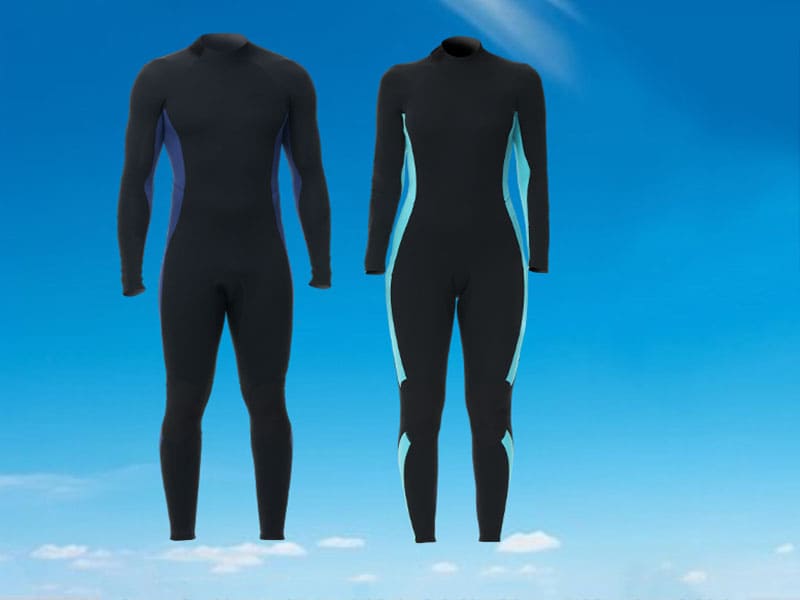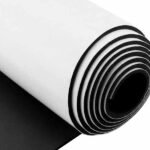Choosing the right wetsuit is a crucial part of ensuring you stay comfortable, warm, and protected during your water sports activities. One of the most common questions people have when selecting a wetsuit is how tight it should fit. A wetsuit that fits properly is essential for insulation, comfort, and performance. But how do you know if the wetsuit is the right fit for you? In this article, we’ll explore the importance of wetsuit fit, what to look for, and the risks of an ill-fitting wetsuit.
A wetsuit should fit snugly against the skin, but it shouldn’t restrict your movement or cause discomfort. It’s important to consider factors like water temperature, your body type, and the specific water sport you’ll be engaging in. Let’s dive into the details of how to find the perfect wetsuit fit.
Is It Better to Size Up or Down in Wetsuits?
When choosing the right size for a wetsuit, you may wonder if it’s better to size up or size down. The answer depends on your body shape and how you plan to use the wetsuit.
-
Sizing Up: If you’re between sizes or have a wider body type, sizing up may give you more comfort and flexibility. However, if the wetsuit is too loose, water will flush in and out, reducing its thermal efficiency. A loose fit could also cause friction and lead to discomfort during long periods of wear.
-
Sizing Down: If you prefer a snugger fit, sizing down can help you achieve a more streamlined look and prevent water from flushing in. However, this may lead to restricted movement, particularly in the shoulders or chest, and cause discomfort if the wetsuit is too tight.
The key is to find a balance. You want a wetsuit that’s snug but not restrictive, with enough space for proper movement and breathability.
Are Wetsuits Supposed to Be Snug?
Yes, wetsuits should be snug. The main purpose of a wetsuit is to trap a thin layer of water between the material and your skin, which is then warmed by your body heat. A snug wetsuit allows this layer of water to stay close to your body, providing insulation. If the wetsuit is too loose, water will flush through the suit, reducing its ability to retain warmth.
Wetsuits should feel tight when you first put them on, but they should not be so tight that they cause discomfort or limit your ability to move. There should be no gaps around the neck, wrists, or ankles, as these areas are common places where water can enter. The suit should fit comfortably across the chest and hips, without pinching or restricting blood flow.
A wetsuit that’s too tight will cause discomfort and could restrict your circulation, while a wetsuit that’s too loose won’t be as effective in maintaining your body temperature in cold water.
Why Is It Important to Have the Right Fit for a Wetsuit?
The right wetsuit fit is essential for several reasons. First and foremost, a properly fitting wetsuit provides better insulation. It allows the wetsuit material to trap a thin layer of water close to your skin, which warms up with your body heat. This layer of water is essential for maintaining your body temperature in cold conditions.
In addition to insulation, a well-fitting wetsuit enhances comfort and performance. If the suit is too tight, it can restrict your movement, making it harder to perform certain actions like swimming, paddling, or surfing. On the other hand, if the wetsuit is too loose, it will allow water to flow in and out, leaving you cold and uncomfortable.
The right fit also ensures that you don’t experience chafing or discomfort from friction. A well-designed wetsuit will fit snugly against your skin, preventing rubbing or irritation, especially around high-movement areas like the shoulders and knees.
How Can You Tell If a Wetsuit Fits Correctly?
There are several ways to tell if a wetsuit fits correctly:
-
No Gaps: A wetsuit should fit snugly with no gaps around the neck, wrists, or ankles. Gaps allow water to enter, reducing the insulation properties of the suit.
-
Comfortable Stretch: When you wear the wetsuit, you should feel a comfortable stretch across your shoulders and chest. You should be able to raise your arms, bend your knees, and perform other movements without feeling restricted.
-
Tight but Not Uncomfortable: While the wetsuit should feel tight, it should not be uncomfortable or cause excessive pressure on your body. It should mold to your body’s contours without restricting circulation.
-
Proper Sealing: Ensure that all zippers, seals, and closures are in good condition and provide a secure fit. Any loose areas can result in water leakage, which reduces the suit’s effectiveness.
If you feel discomfort or find it hard to move in the wetsuit, it’s a sign that the fit isn’t right. A good wetsuit should allow you to move freely and feel secure.
Are There Different Fits for Different Types of Water Sports?
Yes, different water sports may require different wetsuit fits. For instance:
-
Surfing: Wetsuits for surfing should provide flexibility in the arms, shoulders, and chest to allow for paddling. They should fit snugly around the neck and wrists to prevent water from entering.
-
Diving: Wetsuits for diving may have a more fitted, streamlined shape to ensure buoyancy and warmth at deeper depths. The fit needs to ensure minimal water flushing while allowing for freedom of movement during dives.
-
Swimming: A wetsuit for swimming should be tight around the legs and arms to prevent drag. It should fit like a second skin to reduce resistance in the water while providing insulation.
Different wetsuits are designed for different conditions, so the fit may vary based on the sport you intend to use it for.
What Are the Risks of Wearing a Too Tight or Too Loose Wetsuit?
Wearing a wetsuit that is too tight or too loose can lead to several issues:
-
Too Tight:
- Restricted Movement: A wetsuit that is too tight may limit your mobility, making it harder to perform necessary movements for your sport.
- Discomfort and Pain: Wearing a wetsuit that’s too tight can cause chafing, pinching, and overall discomfort, especially after prolonged use.
- Circulation Issues: A wetsuit that is too tight may restrict blood flow, leading to numbness or coldness.
-
Too Loose:
- Water Flushing: A loose wetsuit will allow water to flow in and out, which reduces insulation and keeps you cold.
- Reduced Comfort: A wetsuit that is too loose can cause friction and rubbing, leading to chafing and irritation.
- Less Effective Insulation: Loose wetsuits can’t trap heat as effectively as a snug fit, reducing the warmth it provides.
Both a tight and loose wetsuit can negatively affect your performance and comfort, so it’s crucial to find the right balance.
How to Choose the Right Wetsuit Size for Your Body Type?
Choosing the right wetsuit size is essential for comfort and performance. Here’s how you can choose the best fit:
-
Measure Yourself: Before purchasing a wetsuit, take your measurements, including chest, waist, hips, height, and weight. Compare these measurements with the size chart provided by the manufacturer to find the best match.
-
Consider Your Activity: The fit may vary depending on the type of activity. For surfing, you’ll want flexibility, while for diving, you may need a more snug fit to ensure warmth at deeper levels.
-
Try On Different Sizes: If possible, try on different sizes of wetsuits before purchasing. This will help you determine which one feels the most comfortable and provides the best performance.
-
Look for Stretch: A good wetsuit should stretch enough to fit your body comfortably but still provide a snug, supportive fit. It should never feel restrictive or loose.
Conclusion
The right fit is crucial for getting the best performance and comfort from your wetsuit. Whether you’re surfing, diving, or swimming, a wetsuit that fits properly will help you stay warm, flexible, and comfortable in the water. At Szoneier, we specialize in producing high-quality neoprene wetsuits tailored to your specific needs. If you’re looking for a custom wetsuit that fits perfectly, don’t hesitate to reach out to us for more information. We offer flexible customization options, free samples, and fast lead times for bulk orders.











